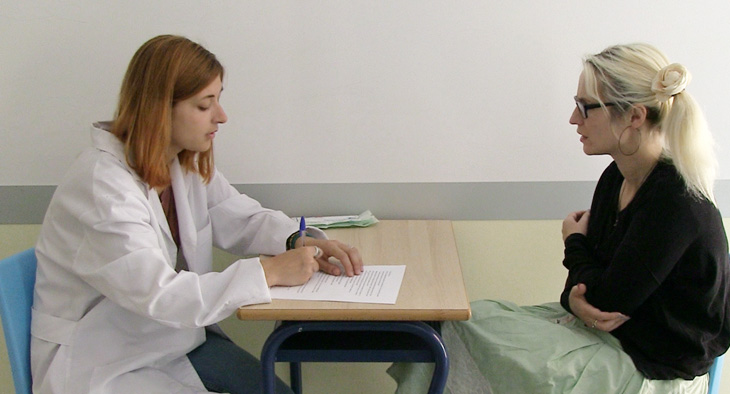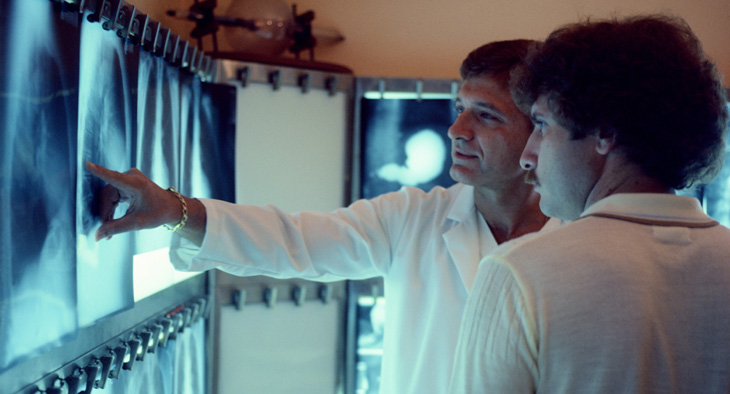In this section you will learn vocabulary of symptoms and causes, and practise giving a diagnosis.
1. Vocabulary: Diagnosing.

In the next exercise you will watch a video of a consultation with a patient. Check that you understand words that you will hear in the video. Match the words to the definitions.
Listen to check your answers.
Now listen and repeat the words.
2. Diagnosing.
Watch the video of the second part of the consultation that you saw in Section 3. Mark the sentences true or false.
3. Ending a consultation.
Now complete this part of the dialogue. Then listen to check your answers.
4. Dictation.

Listen again to the doctor. Write down exactly what she says in your notebook. You will hear each phrase twice.
When you have finished, check your answers.
1. Good evening, Henry, What seems to be the problem?
2. How long has this been going on?
3. Have you had any diarrhoea or cramps in your stomach?
4. OK, lie on the couch, face up, and lift up your shirt.
5. I’m going to press on your stomach and you tell me when it hurts.
6. It seems like gastroenteritis.
7. I’m going to give you a prescription for some syrup.
8. It should clear up in two or three days.
5. Vocabulary: Common symptoms.
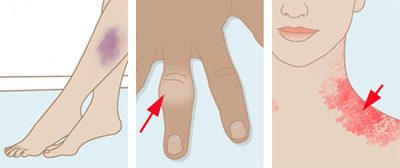
Match the words to the definitions.
Note: The words swelling and pain can be countable or uncountable.
Use ice to reduce swelling after a sports injury. (uncountable)
An enlarged thyroid causes a swelling in the neck. (countable)
Drugs can be administered to reduce pain. (uncountable)
I have a pain in my knee. (countable)
Now listen and repeat the words.
6. Symptoms and body systems.
Put the words in the correct place in the table. This exercise is in two parts.
Part 1
Part 2
7. Symptoms and body systems.
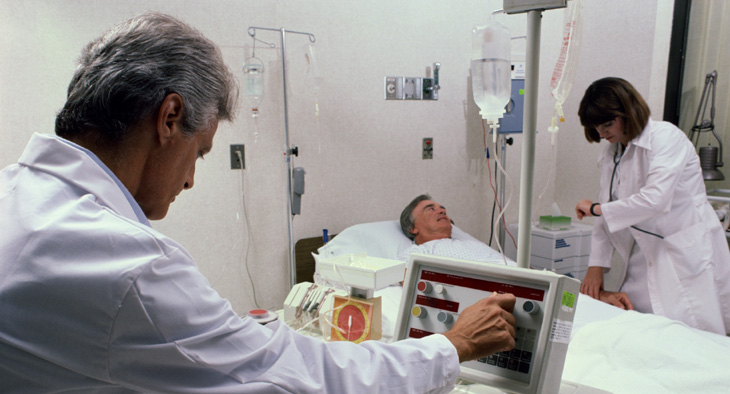
Can you remember? Put the words back in the correct place in the table. This exercise is in two parts.
Part 1
Part 2
9. Listen to symptoms.
Use the words to complete what the patients say. This exercise is in two parts.
Part 1
Part 2
Now listen to check your answers.
10. Describing causes.
Look at the examples.
Your headache is probably caused by stress. (caused by + noun/noun phrase)
The pain is possibly because of an inflammation. (because of + noun/noun phrase)
You are tired because you are working long hours. (because + a clause (a phrase with a verb))
Put the words in order to make more sentences.
11. Pronunciation: Vowel sounds.

Listen to each word and put it in the correct box according to its vowel sound.
Now listen again and repeat the words.
ache, bleed, blood, breast, breath, breathe, bruise, cup, feel, health, lump, pain, tooth, weight, wound
12. Vocabulary: Word building.
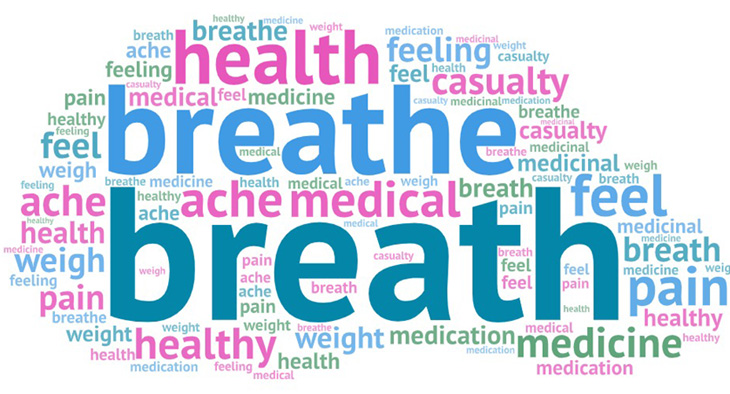
Type in the missing words to complete the table.
Note: The word sore can be an adjective or a noun. When it is a noun it refers to a wound or ulcer that is painful and takes a long time to heal.
I’ve got a sore throat. (adjective)
I’ve got a sore inside my mouth. (noun)
14. Pronunciation: Diagnostic tests.
Listen and put the tests in the order that you hear them. Then listen again and practise saying the names of the tests.
Writing Tutorial 2
In this tutorial you will write about what you do and say to a patient in English when you are diagnosing.
Write the answers to these questions. Give as many examples as possible.
1. If English-speaking patients came to your surgery, how would you greet them in English?
For example: First, I would introduce myself. I would say … and then … . Then, I would …
2. How do you begin to ask about symptoms?
For example: First I say, "Now, what seems …? Then I ask specific questions, like, …
3. Choose TWO of the patients below. Look at the symptoms. What questions do you ask the patient? What else do you do? What diagnostic tests would you ask for or carry out?
- Patient 1: diarrhoea
- Patient 2: abdominal pain
- Patient 3: chest pain
- Patient 4: difficulty swallowing
- Patient 5: a fever
